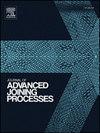异种铝、铜合金搅拌摩擦焊:提高接头质量的策略综述
IF 4
Q2 MATERIALS SCIENCE, MULTIDISCIPLINARY
引用次数: 0
摘要
搅拌摩擦焊(FSW)已成为一种很有前途的连接不同铝(Al)和铜(Cu)合金的技术,由于其独特的性能,在各种工业中得到越来越多的应用。然而,Al和Cu在物理、热学和机械性能上的显著差异为实现高质量的接头带来了挑战。本文综述了提高FSWed Al-Cu异种合金接头质量的策略。详细讨论了FSW过程中Al-Cu界面的微观组织演变和金属间化合物(IMC)的形成。分析了刀具转速、横移速度、刀具几何形状等工艺参数对接头力学性能和断裂行为的影响。此外,本文还回顾了提高接头质量的各种策略,包括通过优化刀具偏移和材料定位来改进工艺、超声波辅助搅拌搅拌、水下搅拌搅拌、使用夹层和增强颗粒来改进搅拌区、外部冷却和加热技术以及接头设计优化。基于之前的研究结果,评估了每种策略在细化微观组织、抑制有害IMC形成和提高力学性能方面的有效性。研究表明,接头质量在很大程度上取决于工艺参数和材料定位的精确控制,刀具向铝侧偏移1-2 mm始终能产生良好的效果。现代辅助技术在接头性能方面取得了显著的进步,超声辅助FSW和浸没式FSW通过更好地控制热输入和金属间化合物的形成,将抗拉强度提高了42%。本文重点介绍了克服这些挑战的先进策略,包括超声辅助FSW、水下FSW和创新的层间技术。此外,本文还全面分析了在工艺优化、显微组织细化和力学性能增强方面的最新进展,以实现高质量的Al-Cu接头,并为选择合适的策略以满足特定的应用要求提供指导。本文章由计算机程序翻译,如有差异,请以英文原文为准。
Friction stir welding of dissimilar aluminum and copper alloys: A review of strategies for enhancing joint quality
Friction stir welding (FSW) has emerged as a promising technique for joining dissimilar aluminum (Al) and copper (Cu) alloys, which are increasingly used in various industries owing to their unique properties. However, significant differences in the physical, thermal, and mechanical properties of Al and Cu pose challenges for achieving high-quality joints. This review comprehensively examines strategies for enhancing the joint quality of FSWed Al-Cu dissimilar alloys. The microstructural evolution and intermetallic compound (IMC) formation at the Al-Cu interface during FSW are discussed in detail. The effects of process parameters, such as tool rotation speed, traverse speed, and tool geometry, on the mechanical properties and fracture behavior of the joints were analyzed. Furthermore, various strategies for improving joint quality are reviewed, including process modification through optimized tool offsetting and material positioning, ultrasonic-assisted FSW, submerged FSW, stir zone modification using interlayers and reinforcement particles, external cooling and heating techniques, and joint design optimization. The effectiveness of each strategy in refining the microstructure, suppressing detrimental IMC formation, and enhancing the mechanical properties was evaluated based on the findings of previous studies. The research demonstrates that joint quality strongly depends on the precise control of process parameters and material positioning, with tool offsets of 1–2 mm toward the aluminum side consistently producing superior results. Modern assisted techniques have shown remarkable improvements in joint performance, with ultrasonic-assisted FSW and submerged FSW enhancing the tensile strength by up to 42 % through better control of the heat input and intermetallic compound formation. This review focuses on advanced strategies aimed at overcoming these challenges, including ultrasonic-assisted FSW, submerged FSW, and innovative interlayer techniques. Additionally, the review provides a comprehensive analysis of recent developments in process optimization, microstructural refinement, and mechanical property enhancement to achieve high-quality Al-Cu joints and offers guidance for selecting appropriate strategies to meet specific application requirements.
求助全文
通过发布文献求助,成功后即可免费获取论文全文。
去求助

 求助内容:
求助内容: 应助结果提醒方式:
应助结果提醒方式:


